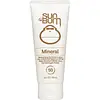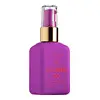What's inside
What's inside
 Key Ingredients
Key Ingredients

 Benefits
Benefits

 Concerns
Concerns

 Ingredients Side-by-side
Ingredients Side-by-side

Zinc Oxide 20%
Cosmetic ColorantWater
Skin ConditioningCocos Nucifera Oil
MaskingButyloctyl Salicylate
Skin ConditioningDiheptyl Succinate
EmollientMethyl Dihydroabietate
Butyrospermum Parkii Butter
Skin ConditioningCapryloyl Glycerin/Sebacic Acid Copolymer
Skin ConditioningSodium Stearoyl Glutamate
CleansingCetearyl Alcohol
EmollientArachidyl Alcohol
EmollientCoco-Glucoside
CleansingTocopherol
AntioxidantTheobroma Cacao Seed Butter
EmollientCetyl Alcohol
EmollientBehenyl Alcohol
EmollientBisabolol
MaskingArachidyl Glucoside
EmulsifyingMicrocrystalline Cellulose
AbsorbentCellulose Gum
Emulsion StabilisingSodium Hyaluronate
HumectantSodium Gluconate
Skin ConditioningPhenoxyethanol
PreservativeCitric Acid
BufferingEthylhexylglycerin
Skin ConditioningPolyhydroxystearic Acid
EmulsifyingZinc Oxide 20%, Water, Cocos Nucifera Oil, Butyloctyl Salicylate, Diheptyl Succinate, Methyl Dihydroabietate, Butyrospermum Parkii Butter, Capryloyl Glycerin/Sebacic Acid Copolymer, Sodium Stearoyl Glutamate, Cetearyl Alcohol, Arachidyl Alcohol, Coco-Glucoside, Tocopherol, Theobroma Cacao Seed Butter, Cetyl Alcohol, Behenyl Alcohol, Bisabolol, Arachidyl Glucoside, Microcrystalline Cellulose, Cellulose Gum, Sodium Hyaluronate, Sodium Gluconate, Phenoxyethanol, Citric Acid, Ethylhexylglycerin, Polyhydroxystearic Acid
Water
Skin ConditioningButyloctyl Salicylate
Skin ConditioningCoco-Caprylate/Caprate
EmollientC12-15 Alkyl Benzoate
AntimicrobialCaprylic/Capric Triglyceride
MaskingDiheptyl Succinate
EmollientPolyglyceryl-6 Distearate
EmulsifyingPropanediol
SolventJojoba Esters
EmollientGlycerin
HumectantPyrus Malus Fruit Extract
Skin ConditioningPolysorbate 20
EmulsifyingPolyhydroxystearic Acid
EmulsifyingPolymethylsilsesquioxane
Potassium Cetyl Phosphate
EmulsifyingPhenoxyethanol
PreservativeAlumina
AbrasiveDiethylhexyl Syringylidenemalonate
Skin ProtectingXanthan Gum
EmulsifyingTocopherol
AntioxidantGlycine Soja Oil
EmollientCapryloyl Glycerin/Sebacic Acid Copolymer
Skin ConditioningCitric Acid
BufferingTriethoxycaprylylsilane
Lonicera Caprifolium Flower Extract
PerfumingTrisodium Ethylenediamine Disuccinate
Chlorphenesin
AntimicrobialParfum
MaskingStearic Acid
CleansingEthylhexylglycerin
Skin ConditioningPassiflora Edulis Seed Oil
EmollientLonicera Japonica Flower Extract
Skin ConditioningAlgae Extract
EmollientPseudoalteromonas Exopolysaccharides
Skin ConditioningSodium Hyaluronate
HumectantSodium Salicylate
PreservativePropylene Glycol
HumectantSodium Dehydroacetate
PreservativeWater, Butyloctyl Salicylate, Coco-Caprylate/Caprate, C12-15 Alkyl Benzoate, Caprylic/Capric Triglyceride, Diheptyl Succinate, Polyglyceryl-6 Distearate, Propanediol, Jojoba Esters, Glycerin, Pyrus Malus Fruit Extract, Polysorbate 20, Polyhydroxystearic Acid, Polymethylsilsesquioxane, Potassium Cetyl Phosphate, Phenoxyethanol, Alumina, Diethylhexyl Syringylidenemalonate, Xanthan Gum, Tocopherol, Glycine Soja Oil, Capryloyl Glycerin/Sebacic Acid Copolymer, Citric Acid, Triethoxycaprylylsilane, Lonicera Caprifolium Flower Extract, Trisodium Ethylenediamine Disuccinate, Chlorphenesin, Parfum, Stearic Acid, Ethylhexylglycerin, Passiflora Edulis Seed Oil, Lonicera Japonica Flower Extract, Algae Extract, Pseudoalteromonas Exopolysaccharides, Sodium Hyaluronate, Sodium Salicylate, Propylene Glycol, Sodium Dehydroacetate
Ingredients Explained
These ingredients are found in both products.
Ingredients higher up in an ingredient list are typically present in a larger amount.
Butyloctyl Salicylate is a chemical UV filter structurally similar to octisalate. It is a photostabilizer, SPF booster, emollient and solvent. This ingredient helps evenly spread out ingredients.
According to a manufacturer, it is suitable for pairing with micro Titanium Dioxide, Zinc Oxide, and pigments.
Photostabilizers help stabilize UV-filters and prevents them from degrading quickly.
Learn more about Butyloctyl SalicylateWe don't have a description for Capryloyl Glycerin/Sebacic Acid Copolymer yet.
Citric Acid is an alpha hydroxy acid (AHA) naturally found in citrus fruits like oranges, lemons, and limes.
Like other AHAs, citric acid can exfoliate skin by breaking down the bonds that hold dead skin cells together. This helps reveal smoother and brighter skin underneath.
However, this exfoliating effect only happens at high concentrations (20%) which can be hard to find in cosmetic products.
Due to this, citric acid is usually included in small amounts as a pH adjuster. This helps keep products slightly more acidic and compatible with skin's natural pH.
In skincare formulas, citric acid can:
While it can provide some skin benefits, research shows lactic acid and glycolic acid are generally more effective and less irritating exfoliants.
Most citric acid used in skincare today is made by fermenting sugars (usually from molasses). This synthetic version is identical to the natural citrus form but easier to stabilize and use in formulations.
Read more about some other popular AHA's here:
Learn more about Citric AcidWe don't have a description for Diheptyl Succinate yet.
Ethylhexylglycerin (we can't pronounce this either) is commonly used as a preservative and skin softener. It is derived from glyceryl.
You might see Ethylhexylglycerin often paired with other preservatives such as phenoxyethanol. Ethylhexylglycerin has been found to increase the effectiveness of these other preservatives.
Phenoxyethanol is a preservative that has germicide, antimicrobial, and aromatic properties. Studies show that phenoxyethanol can prevent microbial growth. By itself, it has a scent that is similar to that of a rose.
It's often used in formulations along with Caprylyl Glycol to preserve the shelf life of products.
Polyhydroxystearic Acid is a soft wax made from castor oil.
It is is a texture thickener, emulsifier, and film-former. Emulsifiers prevent ingredients from separating, such as oils and waters.
Polyhydroxystearic Acid may not be fungal acne safe.
Learn more about Polyhydroxystearic AcidSodium Hyaluronate is hyaluronic acid's salt form. It is commonly derived from the sodium salt of hyaluronic acid.
Like hyaluronic acid, it is great at holding water and acts as a humectant. This makes it a great skin hydrating ingredient.
Sodium Hyaluronate is naturally occurring in our bodies and is mostly found in eye fluid and joints.
These are some other common types of Hyaluronic Acid:
Learn more about Sodium HyaluronateTocopherol (also known as Vitamin E) is a common antioxidant used to help protect the skin from free-radicals and strengthen the skin barrier. It's also fat soluble - this means our skin is great at absorbing it.
Vitamin E also helps keep your natural skin lipids healthy. Your lipid skin barrier naturally consists of lipids, ceramides, and fatty acids. Vitamin E offers extra protection for your skin’s lipid barrier, keeping your skin healthy and nourished.
Another benefit is a bit of UV protection. Vitamin E helps reduce the damage caused by UVB rays. (It should not replace your sunscreen). Combining it with Vitamin C can decrease sunburned cells and hyperpigmentation after UV exposure.
You might have noticed Vitamin E + C often paired together. This is because it is great at stabilizing Vitamin C. Using the two together helps increase the effectiveness of both ingredients.
There are often claims that Vitamin E can reduce/prevent scarring, but these claims haven't been confirmed by scientific research.
Learn more about TocopherolWater. It's the most common cosmetic ingredient of all. You'll usually see it at the top of ingredient lists, meaning that it makes up the largest part of the product.
So why is it so popular? Water most often acts as a solvent - this means that it helps dissolve other ingredients into the formulation.
You'll also recognize water as that liquid we all need to stay alive. If you see this, drink a glass of water. Stay hydrated!
Learn more about Water